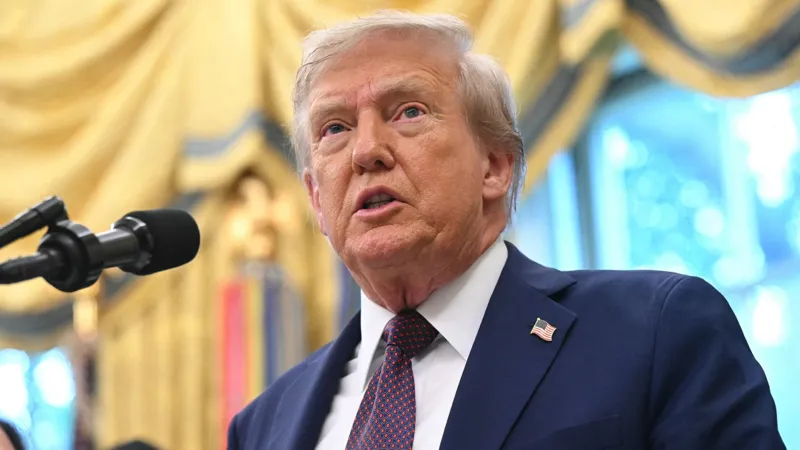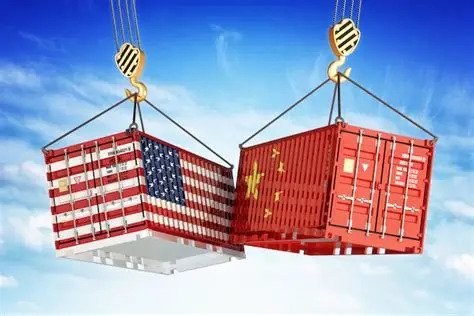By Innovation Times Global Economics Desk
October 14, 2025 | Philadelphia / London / Tokyo
Thousands of Americans and international businesses are facing unprecedented shipping delays and package losses as new tariff rules introduced by the Trump administration create widespread turmoil across global logistics networks.
Graduate student Nicole Lobo is one of many caught in the crisis. After completing a year of study in the United Kingdom, Lobo returned to Philadelphia in August, shipping ten boxes of personal belongings she expected to receive within days. Six weeks later, she is still waiting.
“It’s been horrific,” the 28-year-old said, describing how she received a notice last month warning that her boxes would be destroyed. She has since spent countless hours calling and emailing UPS in a desperate attempt to prevent the loss.
Her experience mirrors that of many other UPS customers struggling with packages held up, misplaced, or destroyed due to new customs and tariff regulations introduced in late August.
Trump Tariff Policy Sparks Widespread Backlogs
The latest disruption stems from a Trump administration decision to end a long-standing exemption that allowed parcels valued under $800 to enter the United States without inspection, taxes, or tariffs.
The abrupt policy shift has made an estimated four million packages daily subject to intensive customs checks and documentation requirements, overwhelming courier networks like UPS and FedEx.
Customers across the country are now facing long delays, unexpected fees, and in some cases, devastating losses.
“It’s beyond comprehension,” said Janani Mohan, a 29-year-old engineer in Michigan whose shipment from India contained priceless heirlooms — including her mother’s wedding dress, a family sari, and old photographs. After weeks of silence, she received an alert stating her parcel was “set for disposal.”
“I literally cried on the phone,” Mohan said. “Everything in that box represented family history. It was irreplaceable.”
Businesses Face Mounting Costs and Inventory Shortages
The impact extends far beyond personal shipments. Oregon-based Mizuba Tea Co., which imports high-quality matcha from Japan, says five of its shipments worth more than $100,000 remain stuck in customs.
“My whole team is basically on scan watch,” said Lauren Purvis, who manages the company’s operations. “It’s clear the system was not prepared to handle the sudden volume and paperwork these new rules require.”
UPS acknowledged the delays but said it was still managing to clear over 90% of international packages within a day of arrival. The company said customers are contacted three times before a package is destroyed.
However, multiple individuals and businesses interviewed say they were never contacted before seeing the “disposal” alerts on their tracking pages.
FedEx, meanwhile, said it only destroys packages at the shipper’s instruction, but confirmed that new customs requirements have caused major slowdowns.
Small Firms Hit Hardest
Swedish confectionery exporter Swedish Candy Land says more than 700 parcels sent to U.S. customers in early September were held or destroyed, costing the firm nearly $50,000 in refunds and lost goods.
“We had to switch to FedEx just to keep our business alive,” said co-founder Tobias Johansson, who described the experience as a nightmare. “We have not received any clear answers from UPS, and our customers are furious.”
Experts warn that the fallout will continue to ripple through global supply chains. Bernie Hart, vice president at Flexport, said the disruptions are affecting nearly every sector, even businesses not directly reliant on the $800 de minimis exemption.
“This can be felt across the board,” Hart said. “The entire logistics ecosystem is struggling to adjust.”
Industry and Economic Fallout
Executives at FedEx have described the situation as a “very stressful period,” especially for smaller companies with limited compliance resources. The firm expects the regulatory changes to cost nearly $1 billion this year, including $300 million in additional hiring and operational expenses.
John Pickel, vice president of supply chain policy for the National Foreign Trade Council, cautioned that the worst may not be over.
“Many companies rushed to move goods before the tariffs took effect, so trade volumes dipped last month,” Pickel said. “But as the new rules settle in, it’s clear that adapting is much harder than anyone anticipated.”
For ordinary Americans like Nicole and Janani, the economic and emotional toll continues to mount. Despite recent tracking updates suggesting progress, both say their trust in global shipping giants has been badly shaken.
“I just want my belongings back,” Lobo said. “It’s been six weeks of uncertainty and helplessness — all because of politics and paperwork.”


